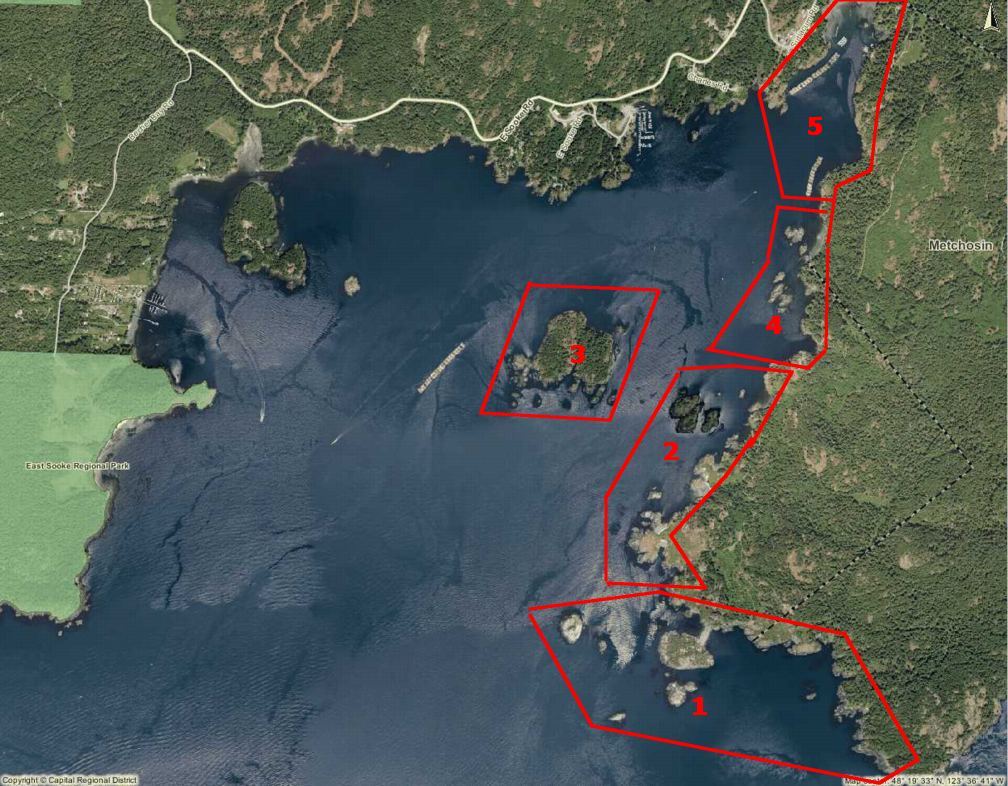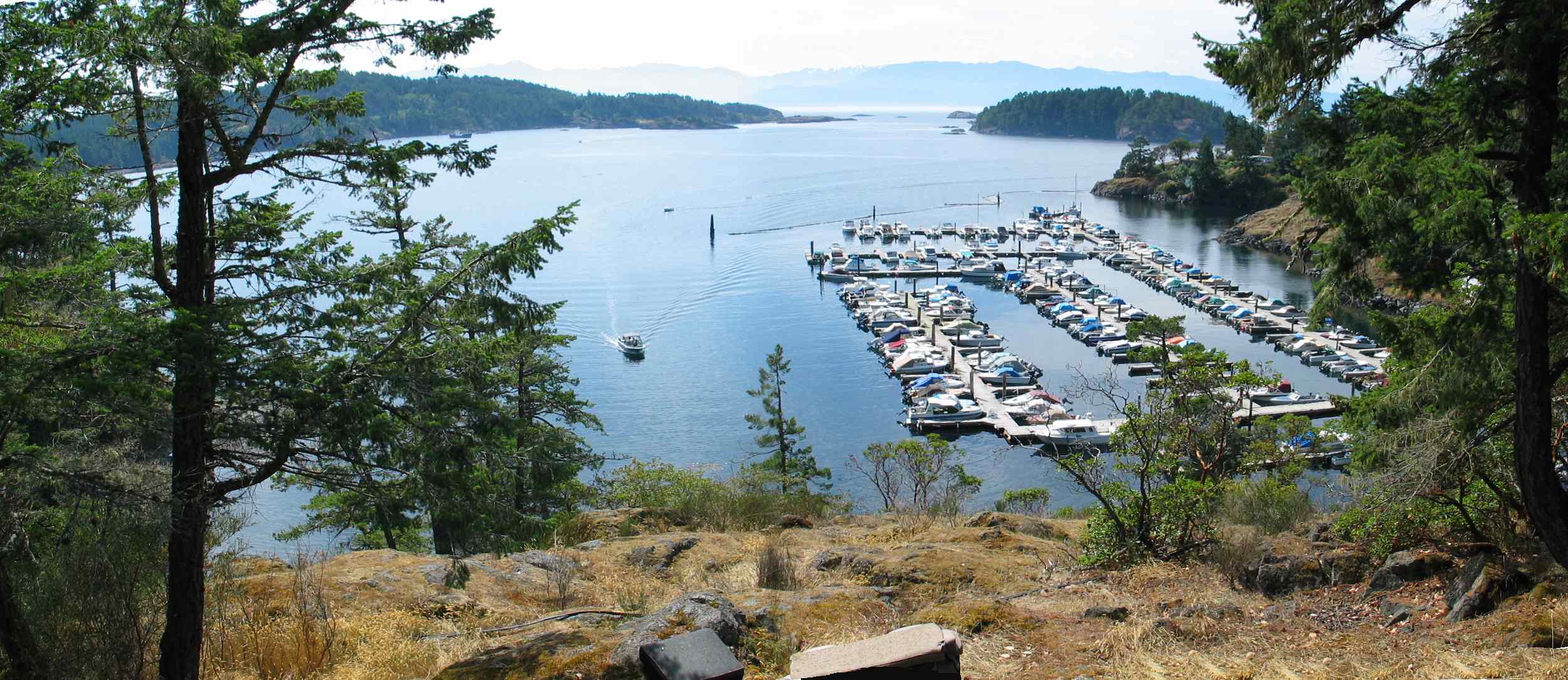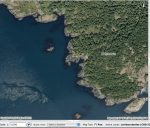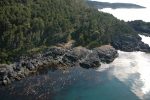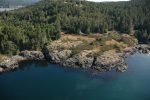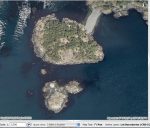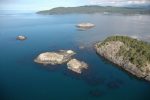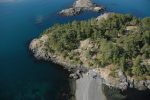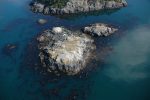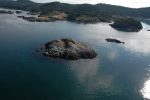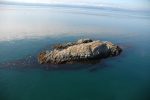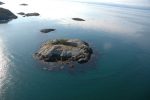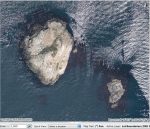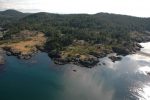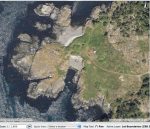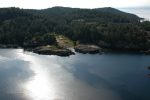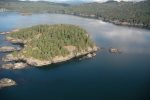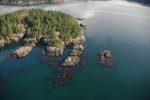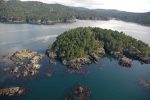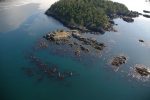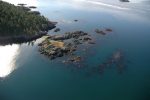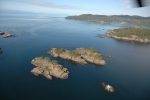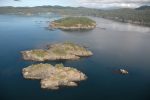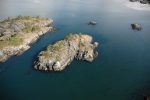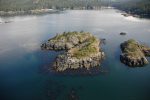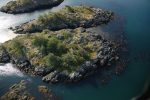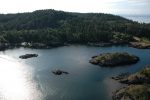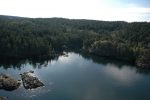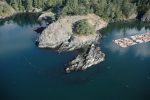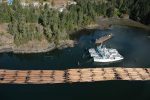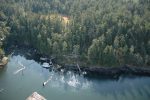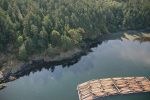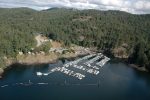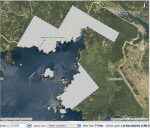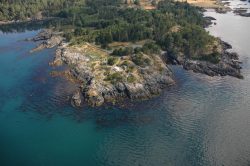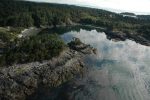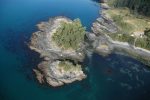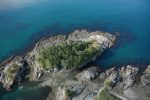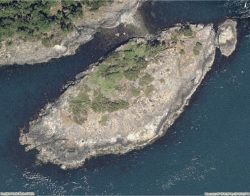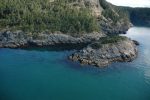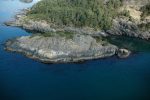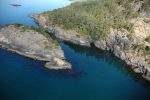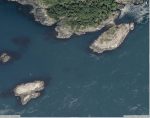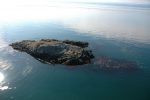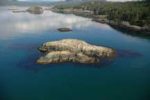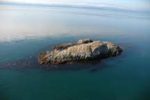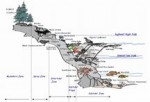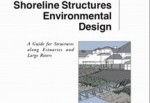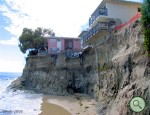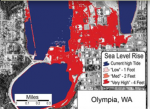In Metchosin when issues of development or cleanup of our coastal areas come along, we are often left wondering about which level of government has jurisdiction over marine issues. This file provides some of the background of those issues. It often determines who has responsibility for permitting development along shorelines, or even who cleans up when there is a coastal problem.
In 1979 this issue came to light when we were involved in having the ecological reserve created to a depth of 20 fathoms at Race Rocks. An ecological reserve created by the province, could only involve provincial territory, so the B.C. Attorney General’s Office was consulted by the then “Ministry of Lands Parks and Housing” for clarification. The reserve was created in 1980, but it took a Supreme Court of Canada decision in 1982 to make it official that the province really did have jurisdiction over the seabed that far out in the Strait of Juan de Fuca.
I have taken a quote from the admiraltylaw.com website which describes in Part 1-Who Controls the Offshore?, Some of the interesting history around this case in law. Note that the concern at the time for the upcoming importance of seabed resources such as oil, contributed to the urgency of this decision.
- “How British Columbia is Different: In 1967, British Columbia posed much the same question to the Supreme Court of Canada. The Court found that the seabed and its resources, from the mean low water mark to the outer limit of the Territorial Sea (12 nautical miles), was within the exclusive control of the Federal Government.However, like Newfoundland, British Columbia wasn’t satisfied with this answer. In 1981, the Province declared the entire coast an “Inland Marine Zone” (figure #1), in an attempt to assert its jurisdiction over the area. This declaration was political at best, and had little, if any, legal significance.In 1982, BC returned to the Supreme Court to ask the Court if the seabed resources between Vancouver Island and the mainland, particularly the seabed of Queen Charlotte Straight, Johnstone Straight, Georgia Straight and Juan de Fuca Straight, were within the jurisdiction of the Province.In deciding for the Province, the Court looked to the unique history of British Columbia. The Court found that when the Province was originally created as a colony by the British Parliament in 1866, its borders were defined with the most western outer limit of the Province being the “Pacific Ocean”. The court contemplated the meaning of “Pacific Ocean” and found that the water and seabed between Vancouver Island and the mainland were not commonly considered part of the Pacific Ocean and were therefore within the jurisdiction of the province.
Importantly, we know from the Geological Survey of 1998 that the hydrocarbon reserves under these areas of Provincial control, particularly the Georgia Basin, contain minimal oil, but do contain modest natural gas reserves (6.5 trillion cubic feet). We further know from the 1998 Survey that the majority of BC’s offshore oil (9.8 billion barrels) and gas (26 trillion cubic feet) lies under the Queen Charlotte Basin in the Queen Charlotte Sound and Hecate Strait.Unfortunately for the BC government, the question posed to the Supreme Court in 1982 did not include a question as to who controls the bulk of the resources, those being under Queen Charlotte Sound and Hecate Straight. As a result, there is no binding authority that states specifically that those areas are under the control of the Federal Government. Indeed, if the Supreme Court were to find that Hecate Straight and Queen Charlotte Sound were not part of the “Pacific Ocean” proper, than the seabed resources would fall within the boundaries and the control of the Province. However, politicians may wish to settle this question themselves.Present Status of JurisdictionsAs it stands now, the province clearly has jurisdiction over the resources under the Queen Charlotte Straight, Johnstone Straight, Georgia Strait and Juan de Fuca Strait. The Federal Government, arguably, has jurisdiction over the vast majority resources under Queen Charlotte Sound and Hecate Strait. Whether the province will attempt to capitalize on its self-pronounced “Inland Marine Zone” and assert jurisdiction over the reserves under Hecate Straight is questionable as it would likely mean a long and drawn out legal battle. In the following article I will discuss how a similar battle was settled on the Atlantic coast, and why the approach taken there is likely the best approach for B.C.Before closing, it is interesting to note that the B.C. government could avoid a dispute over jurisdiction in Hecate Straight and still explore and develop a portion of the Queen Charlotte Basin. Maps forming part of the 1998 Geological Survey Canada show that a portion of this massive petroleum reserve lies under Graham Island. This oil can be accessed from Graham Island without the jurisdictional complications and the added complexity of drilling in the marine environment. The reserves directly under Hecate Straight might also be reached by drilling from land using directional and horizontal drilling. Although such ideas may successfully avoid a conflict of jurisdictions with the Federal Government, they still contain serious social, economic and political issues with respect to drilling on Haida Gwai.”
From this BC government page for Oil spills:
- “Guiding Principle
The Province of British Columbia is committed to protecting British Columbia’s coastal environmental resources from harmful oil spills emanating from marine vessels, industrial facilities or inland sources.
Because of its responsibility to protect and manage Crown lands, the Province is a major stakeholder in any marine oil spill. Its jurisdiction includes all land between the high and low water mark, the seabed of the Strait of Georgia, Juan de Fuca and Queen Charlotte Sound-Johnstone Strait, and the coastal seabed between major headlands unless responsibility has been transferred specifically to a federal jurisdiction or is in private ownership.
Residing in or on these foreshore and seabed areas are provincial resources that include archaeological, recreational, heritage, wildlife and aquatic resources. Responsibility to protect and manage marine resources, such as waterfowl and fisheries, is often shared with federal agencies.
It is these provincial and shared resources of the foreshore, offshore and seabed that are at risk from a spill and that are vital to many coastal communities for their livelihood.
Since the federal government is also responsible for shipping and for certain other marine resources, responsibility to protect and manage marine resources is a joint effort between provincial and federal agencies.
- Provincial Role
The Province will take an active leadership and participatory role in coastal resource identification and, in the event of an oil spill, the protection and cleanup of the intertidal shoreline and seabed, which are under the jurisdiction of the Province.
The Province’s response efforts will focus on the identification and mapping of provincial Crown resources, which include, but are not limited to, intertidal marine habitats, wildlife habitats and populations, archaeological, cultural, aquatic, park and ecological reserves.
The Province will set priorities for resource protection and will establish oil spill protection and cleanup measures for shorelines. As well, it will ensure the availability of equipment and trained personnel to manage spill response safely and effectively.
The Province will work in concert with federal agencies wherever both federal and provincial resources are to be protected.
The level of response capability of the Province will also recognize the particular expertise and resources of the Canadian Coast Guard, Environment Canada, and Fisheries and Oceans Canada to undertake emergency response. Opportunities will be established for contractors to provide skilled assistance and resources in the event of a major spill.”
The Management Plan for the Race Rocks Ecological reserve also refers to jursisdictions:
- “Cooperation with the Federal Government
Jurisdictional responsibilities for the management of the marine environment and marine values are shared between the federal and provincial governments. For example, Fisheries and Oceans Canada (DFO) is responsible for the regulations of fisheries and the lead responsibility for navigation and marine mammal protection. The Coast Guard, an agency within DFO, is
responsible for the automated lightstation on Great Race Rock. The Department of National Defence uses explosives in the area, which may also have impacts on the Reserve.
The province, on the other hand, is responsible for the terrestrial areas, the seabed, and the natural values on those lands. The Province is working with federal agencies, including DFO, Parks Canada and Environment Canada, to develop and implement a marine protected areas strategy, and with Parks Canada to implement the Pacific Marine Heritage Legacy (PMHL)
program.
The highest level of protection for the Race Rocks area can only be achieved through the cooperative application of both federal and provincial authorities. “
Further Information about jurisdiction concerning coastal development can be found in Coastal Jurisdiction in British Columbia (Green Shores) This is an excellent resource, summarizing the issues of coastal jurisdiction. It describes the limits of landowner, BC Crown and Federal jurisdiction along the coastal areas.
 AREA1: Swordfish Island to Bedford Island.
AREA1: Swordfish Island to Bedford Island. AREA 2: North West corner of Beecher Bay
AREA 2: North West corner of Beecher Bay AREA 3: Islands in Beecher Bay
AREA 3: Islands in Beecher Bay AREA 4: East Side of Beecher Bay and IR#2
AREA 4: East Side of Beecher Bay and IR#2 AREA 5: North East Corner of Beecher Bay
AREA 5: North East Corner of Beecher Bay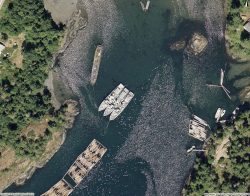 See this file for the Anthropogenic effects of habitat modification
See this file for the Anthropogenic effects of habitat modification
